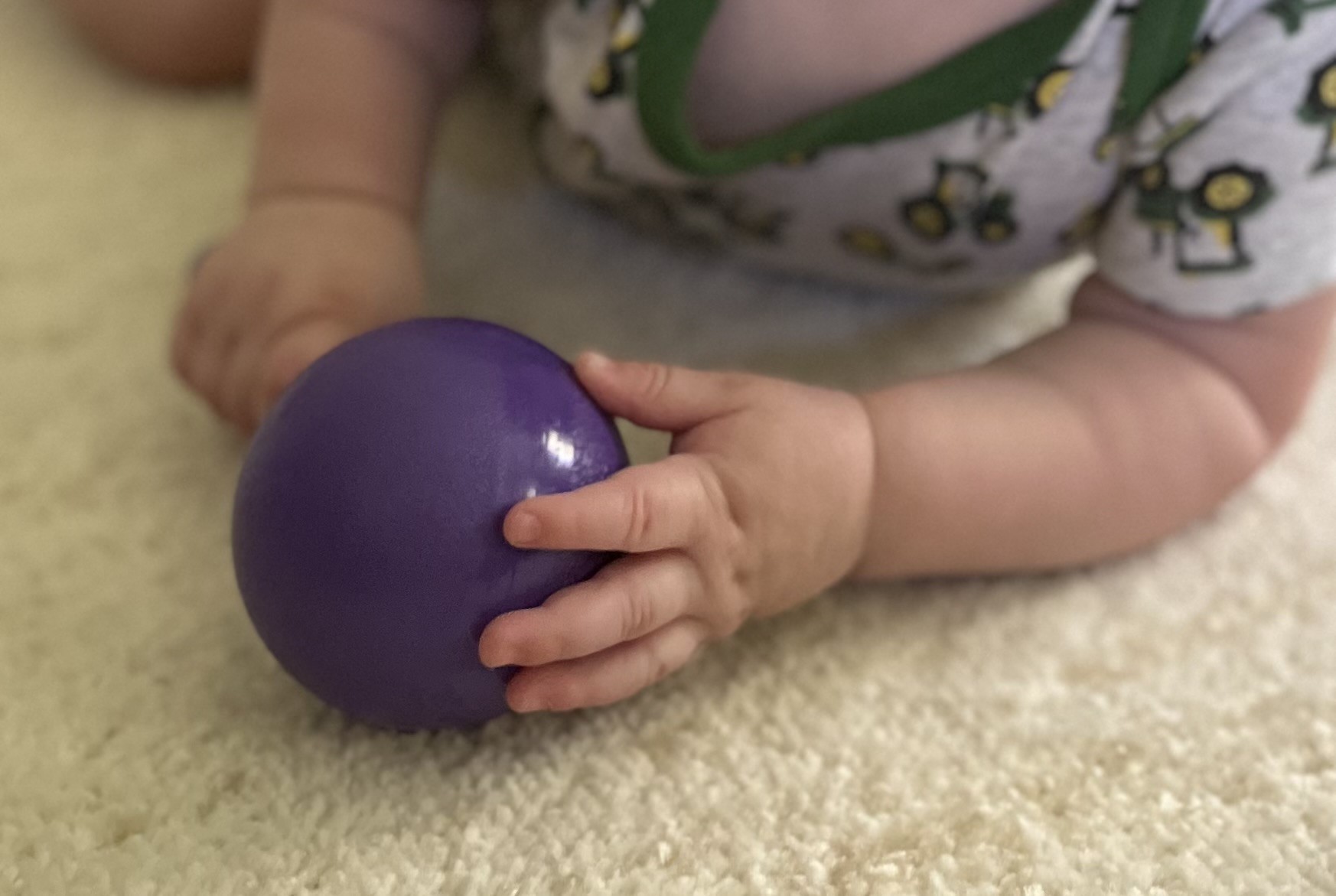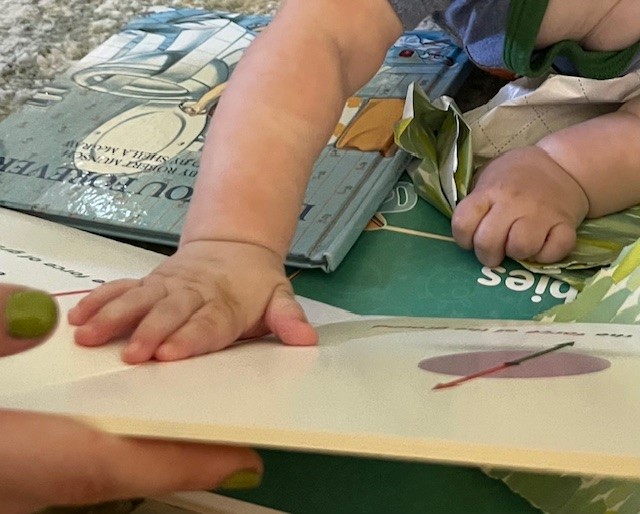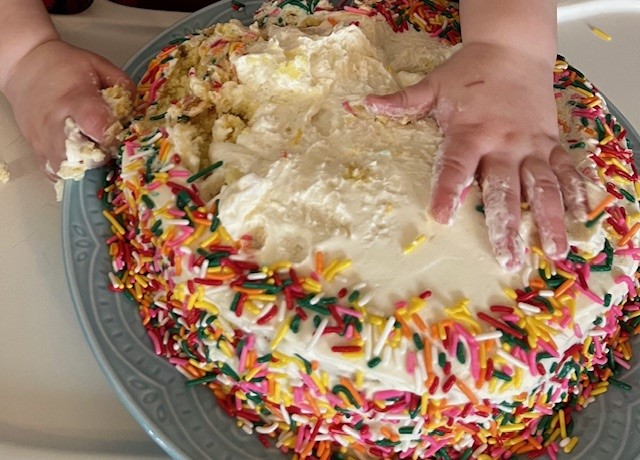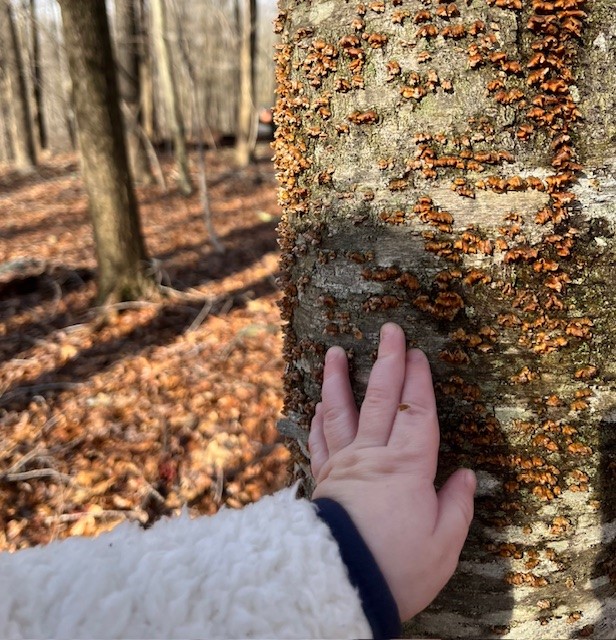
The Literacy for Little Ones Program
Texas School for the Blind and Visually Impaired Outreach Programs has developed a program to help professionals and families provide systematic opportunities for movement, interaction, and stimulation to infants and young children with visual impairments.
Literacy for Little Ones (LLO) was developed to help professionals and families provide systematic opportunities for movement, interaction, and stimulation to infants and young children with visual impairments, especially those who are likely to be tactile learners. It was developed in response to concerns identified by the Texas Action Committee for the Education of Students with Visual Impairments that students who are tactile learners were not demonstrating adequate literacy progress.
Literacy grows with our understanding of the world and the ability to communicate about it using gestures, speech, sign language, or other formats. Mastery of literacy skills begins with our very earliest experiences. Although these skills may emerge differently for students with visual impairments and those with additional learning needs, all children’s growth follows recognized developmental sequences. VI professionals can help families support early literacy at home with specially designed instruction based on these sequences. Experiences in the earliest years contribute to later reading success.

We must actively support a child’s foundational literacy skills as they grow to build toward conventional reading success. In school, literacy instruction is typically based on the five key components, noted by the National Reading Panel (1): phonemic awareness, phonics, fluency, vocabulary, and comprehension. Literacy for Little Ones (LLO) focuses on early developmental skills that are prerequisites for such formal reading instruction. LLO includes strategies for families to incorporate into home routines so that young children with a significant visual impairment can benefit from a rich literacy background before they enter formal academic schooling. Although LLO was created to fill the gaps noted in the readiness of young students for tactile learning, including braille, these activities and resources have benefited children with a wide range of visual impairments.
Literacy for Little Ones is built around a series of topical trainings focusing on
- Gross and fine motor skills (including tactile skills for future braille readers)
- Early concept development
- Language and communication skills
- Emerging reading and writing skills

The first three areas are important to address in early childhood, because they should be well established before moving on to instruction in formal reading and writing. When older students do not make expected progress in book skills such as tracking, identifying letters, and answering comprehension questions about stories, these delays may reflect missed mastery of important prerequisite skills.
Each LLO session folder includes information on how to prepare for each session, a PowerPoint presentation for each topic, resources such as hands-on activities, videos, handouts and links for additional resources. There is a pre and a post test for the overall program. Teachers will receive information about appropriate evaluation tools and curricular materials to use with their students. In addition to the topical sessions, professionals will practice applying the learning with their young students in home and/or day care visits.
Professionals included in these training sessions should include the VI professionals on the child’s educational team. In addition, related service providers, classroom and day care teachers, and others involved in the children’s learning add their expertise and learning to the group.
LLO was initially designed to bring families together with professionals. One model is to present each topic to professionals first, in order to focus on evaluation and curricular tools for home and classroom. This also allows review of student IFSP and IEP goals and other educational perspectives. A separate session for teachers improved their implementation of this training. Then family members and their children come to participate in separate, joint family/professional activities implementing strategies for learning. Joint attendance provides an interactive, highly motivational context for demonstrating and implementing the strategies included in these workshops. LLO has also been presented as online workshops for professionals only, who then practice the activities individually in their home and classroom visits. Many models will work! Although it can be difficult to arrange transportation and other logistics, we do encourage presenters to find ways to ensure that families are included to the extent possible. When parents have opportunities to share with each other and to observe other children at different stages of development, they gain confidence in their parenting abilities related to literacy development. Teachers gain as well from the engaging activities which foster positive interaction with family members.
LLO can be presented in a variety of models. We suggest:
- An intro and four ½ day sessions with professionals (in person/virtual) and four ½ day sessions with combined professionals and families in person
- An intro and four ½ day sessions with professionals (in person/virtual) and invite families for an in person ½ day session at the end of the training
- An intro and four ½ day sessions with professionals only (in person/virtual)

LLO was first offered in Abilene in 2018, and has been presented in several regions and formats since then. We have found that groups of 6-12 families provided an optimal variety of viewpoints while allowing full participation. It can be more challenging to ensure all voices are heard in larger groups, while managing many young children requires space and many hands.
We hope this LLO Project supports your efforts to increase positive literacy outcomes for students who have visual impairments. We hope we have provided enough structure so you have all the information and materials you need and can have fun, while getting kids on the path to literacy! To view all of the training materials and seek any additional information or assistance regarding the implementation of this program, please reach out to the individual listed on the Literacy for Little Ones Webpage.
